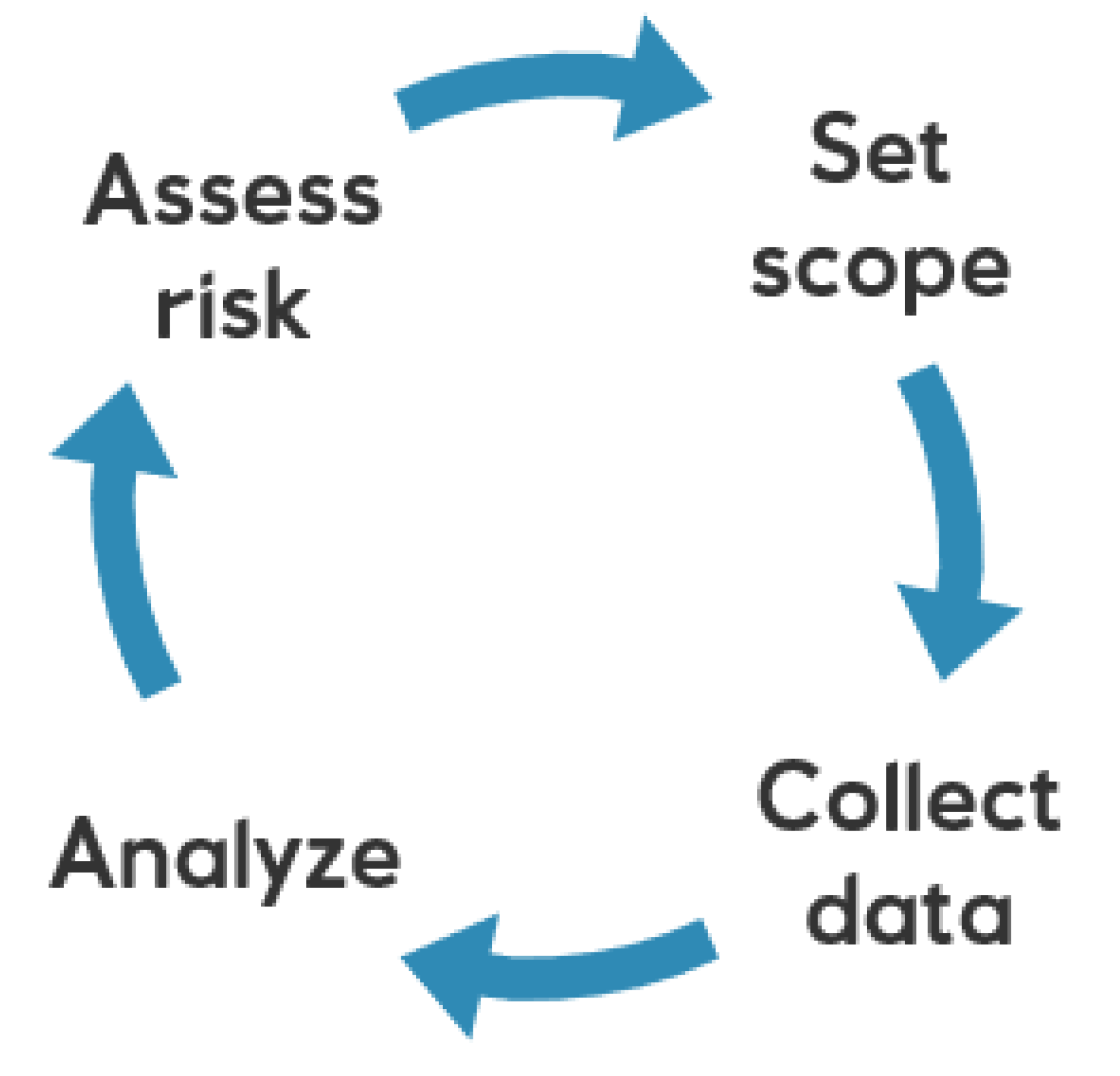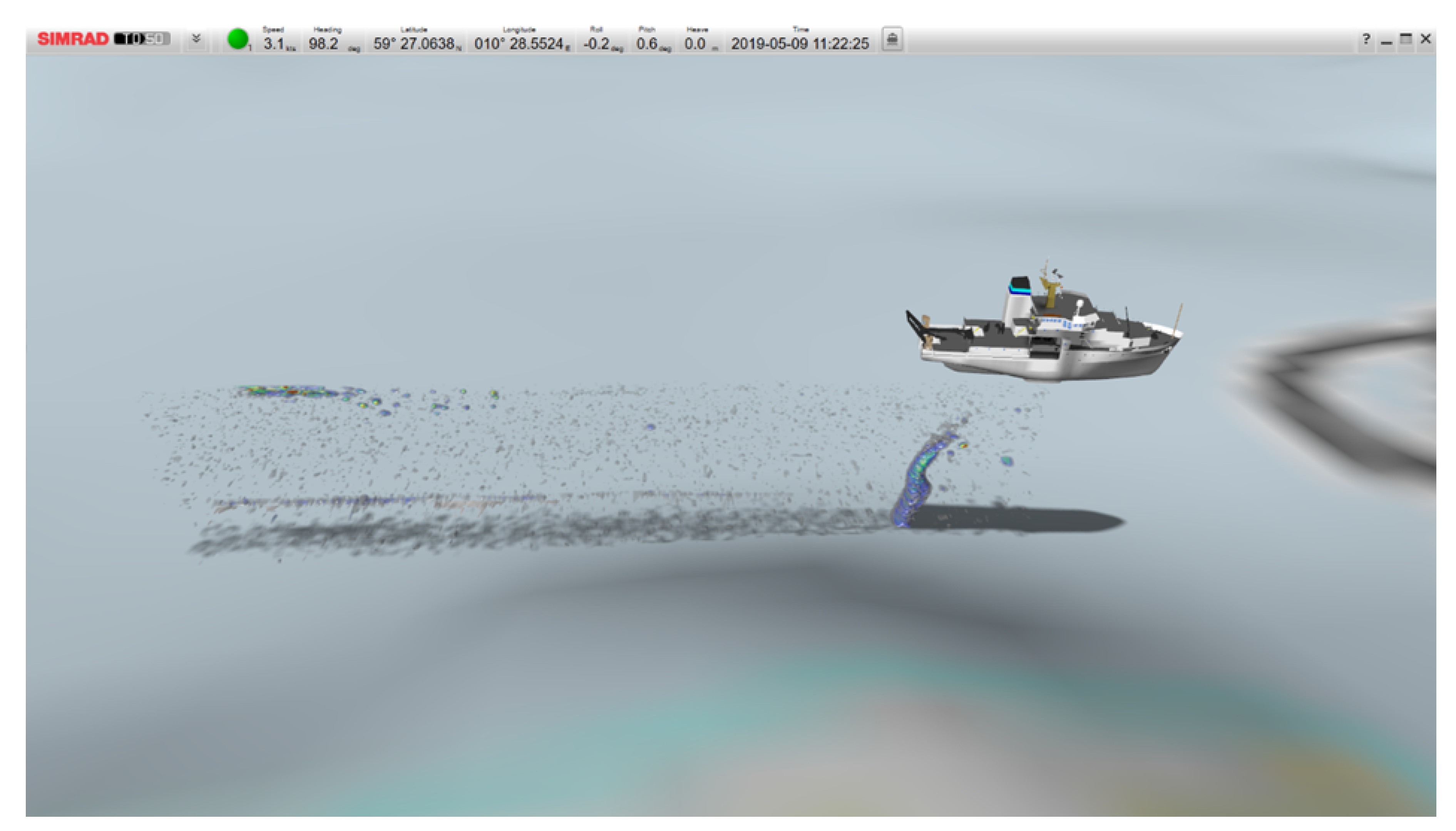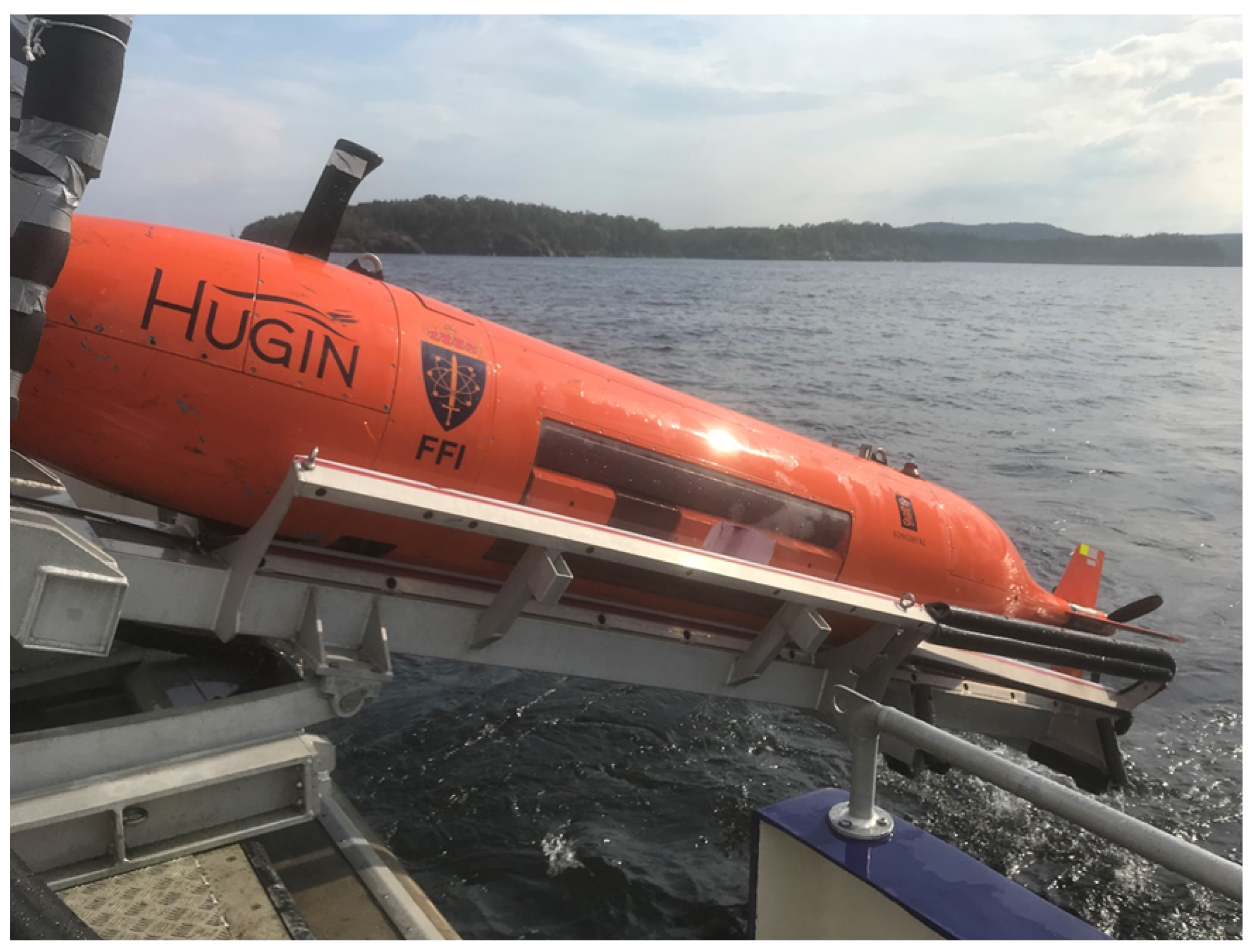Marine Monitoring for Offshore Geological Carbon Storage—A Review of Strategies, Technologies and Trends
Abstract
:1. Introduction
- Understanding the marine environment and recognizing anomalies. Given the significant natural variability in the marine environment, detecting and reliably attributing an anomaly related to an ongoing GCS project without introducing false alarms requires a strong understanding of the marine environment. Observational data are limited, and advanced ocean models, therefore, play a significant role in marine monitoring, coupled with accurate simulation of potential leakage scenarios.
- Selecting and combining sensors and platforms to detect, attribute and quantify potential leakage, and conversely, to document the lack thereof. This includes sensors capable of detecting and characterizing different aspects of potential leakage, such as bubble seeps, chemical changes in the water column, and features in the marine environment, such as pockmarks, bacterial mats or gas-saturated sediments. Platforms on which these sensors may be mounted include surface vessels/ships, AUVs, gliders, and stationary templates. A strategy for how to use and combine these technologies should ensure adequate and practically/economically feasible monitoring.
- Extracting key information. Depending on the monitoring strategy, the amount of data quickly becomes unmanageable and human interpretation impractical. Dedicated data analysis is required to extract key information from significant and diverse data sets. Machine learning may play a significant role in differentiating between natural variability and potential leakage.
2. Strategies for Marine GCS Monitoring
2.1. Cite Characterization—Understanding the Baseline
2.2. Using a Risk-Based Approach
2.3. A Site-Specific and Flexible Marine Monitoring Program
3. Overview of Marine Monitoring Technologies
3.1. Acoustic Sensors
3.2. Chemical and Oceanographic Sensors
3.3. Emerging Technologies
3.4. Sensor Platforms
3.4.1. Surface Vessels
3.4.2. Autonomous Underwater Vehicles
3.4.3. Gliders
3.4.4. Stationary Monitoring Solutions
3.5. The Role of Modeling
4. Knowledge Gaps and Future Research Directions
Author Contributions
Funding
Data Availability Statement
Conflicts of Interest
References
- Gale, J.; Abanades, J.; Bachu, S.; Jenkins, C. Special issue commemorating the 10th year anniversary of the publication of the intergovernmental panel on climate change special report on CO2 capture and storage. Int. J. Greenh. Gas Control 2015, 40, 1–5. [Google Scholar] [CrossRef]
- Metz, B.; Davidson, O.; de Coninck, H.; Loos, M.; Meyer, L. IPCC Special Report on Carbon Dioxide Capture and Storage. Prepared by Working Group III of the Intergovernmental Panel on Climate Change; Technical Report; Cambridge University Press: Cambridge, UK; New York, NY, USA, 2005. [Google Scholar]
- Ringrose, P.S.; Meckel, T. Maturing global CO2 storage resources on offshore continental margins to achieve 2DS emissions reductions. Sci. Rep. 2019, 9, 17944. [Google Scholar] [CrossRef]
- Furre, A.K.; Eiken, O.; Alnes, H.; Vevatne, J.N.; Kiær, A.F. 20 Years of Monitoring CO2-injection at Sleipner. Energy Procedia 2017, 114, 3916–3926. [Google Scholar] [CrossRef]
- Global CCS Institute. The Global Status of CCS: 2019; Technical Report; Global CCS Institute: Canberra, Australia, 2019. [Google Scholar]
- Alcalde, J.; Flude, S.; Wilkinson, M.; Johnson, G.; Edlmann, K.; Bond, C.; Scott, V.; Gilfillan, S.; Ogaya, X.; Haszeldine, S. Estimating geological CO2 storage security to deliver on climate mitigation. Nat. Commun. 2018, 9, 2201. [Google Scholar] [CrossRef]
- Dean, M.; Blackford, J.; Connelly, D.; Hines, R. Insights and guidance for offshore CO2 storage monitoring based on the QICS, ETI MMV, and STEMM-CCS projects. Int. J. Greenh. Gas Control 2020, 100, 103120. [Google Scholar] [CrossRef]
- Tanaka, Y.; Sawada, Y.; Tanase, D.; Tanaka, J.; Shiomi, S.; Kasukawa, T. Tomakomai CCS Demonstration Project of Japan, CO2 Injection in Process. Energy Procedia 2017, 114, 5836–5846. [Google Scholar] [CrossRef]
- Jenkins, C.; Chadwick, A.; Hovorka, S.D. The state of the art in monitoring and verification—Ten years on. Int. J. Greenh. Gas Control 2015, 40, 312–349. [Google Scholar] [CrossRef] [Green Version]
- Blackford, J.; Alendal, G.; Avlesen, H.; Brereton, A.; Cazenave, P.W.; Chen, B.; Dewar, M.; Holt, J.; Phelps, J. Impact and detectability of hypothetical CCS offshore seep scenarios as an aid to storage assurance and risk assessment. Int. J. Greenh. Gas Control 2020, 95, 102949. [Google Scholar] [CrossRef]
- Dean, M.; Tucker, O. A risk-based framework for Measurement, Monitoring and Verification (MMV) of the Goldeneye storage complex for the Peterhead CCS project, UK. Int. J. Greenh. Gas Control 2017, 61, 1–15. [Google Scholar] [CrossRef]
- Blackford, J.; Bull, J.M.; Cevatoglu, M.; Connelly, D.; Hauton, C.; James, R.H.; Lichtschlag, A.; Stahl, H.; Widdicombe, S.; Wright, I.C. Marine baseline and monitoring strategies for carbon dioxide capture and storage (CCS). Int. J. Greenh. Gas Control 2015, 38, 221–229. [Google Scholar] [CrossRef] [Green Version]
- ECO2. ECO2 Final Publishable Summary Report; Technical Report; Available online: https://www.eco2-project.eu/ (accessed on 27 August 2021).
- Blackford, J.; Artioli, Y.; Clark, J.; de Mora, L. Monitoring of offshore geological carbon storage integrity: Implications of natural variability in the marine system and the assessment of anomaly detection criteria. Int. J. Greenh. Gas Control 2017, 64, 99–112. [Google Scholar] [CrossRef]
- Blomberg, A.E.A.; Waarum, I.K.; Eek, E.; Totland, C.; Lorentzen, O. ACT4storage—Acoustic and Chemical Technologies for Environmental GCS Monitoring. D4—Recommended Guidelines Report; Technical Report; Norwegian Geotechnical Institute: Oslo, Norway, 2020. [Google Scholar]
- Vinca, A.; Emmerling, J.; Tavoni, M. Bearing the Cost of Stored Carbon Leakage. Front. Energy Res. 2018, 6, 40. [Google Scholar] [CrossRef] [Green Version]
- Reason, J. Human error: Models and management. BMJ 2000, 320, 768–770. [Google Scholar] [CrossRef] [PubMed] [Green Version]
- Medwin, H.; Clay, C.S. Fundamentals of Acoustical Oceanography; Academic Press: Cambridge, MA, USA, 1988. [Google Scholar]
- Marcon, Y.; Kopiske, E.; Leymann, T.; Spiesecke, U.; Vittori, V.; von Wahl, T.; Wintersteller, P.; Waldmann, C.; Bohrmann, G. A Rotary Sonar for Long-Term Acoustic Monitoring of Deep-Sea Gas Emissions. In Proceedings of the OCEANS 2019—Marseille, Marseille, France, 17–20 June 2019; pp. 1–8. [Google Scholar]
- Kubilius, R.; Pedersen, G. Relative acoustic frequency response of induced methane, carbon dioxide and air gas bubble plumes, observed laterally. J. Acoust. Soc. Am. 2016, 140, 2902–2912. [Google Scholar] [CrossRef]
- von Deimling, J.S.; Greinert, J.; Chapman, N.R.; Rabbel, W.; Linke, P. Acoustic imaging of natural gas seepage in the North Sea: Sensing bubbles controlled by variable currents. Limnol. Oceanogr. Methods 2010, 8, 155–171. [Google Scholar] [CrossRef]
- Ergün, M.; Dondurur, D.; Çifçi, G. Acoustic evidence for shallow gas accumulations in the sediments of the Eastern Black Sea. Terra Nova 2002, 14, 313–320. [Google Scholar] [CrossRef]
- Hovland, M. Large pockmarks, gas-charged sediments and possible clay diapirs in the Skagerrak. Mar. Pet. Geol. 1991, 8, 311–316. [Google Scholar] [CrossRef]
- Waarum, I.K.; Sparrevik, P.; Kvistedal, Y.; Hayes, S.; Hale, S.; Cornelissen, G.; Eek, E. Innovative Methods for Methane Leakage Monitoring Near Oil and Gas Installations. In Proceedings of the OTC Offshore Technology Conference, Houston, TX, USA, 3 May 2016. [Google Scholar]
- Blondel, P. The Handbook of Sidescan Sonar; Springer: Berlin/Heidelberg, Germany, 2009. [Google Scholar]
- Uchimoto, K.; Nishimura, M.; Watanabe, Y.; Xue, Z. An experiment revealing the ability of a side-scan sonar to detect CO2 bubbles in shallow seas. Greenh. Gases Sci. Technol. 2020, 10, 591–603. [Google Scholar] [CrossRef]
- Blomberg, A.E.A.; Sæbø, T.O.; Hansen, R.E.; Pedersen, R.B.; Austeng, A. Automatic Detection of Marine Gas Seeps Using an Interferometric Sidescan Sonar. IEEE J. Ocean. Eng. 2017, 42, 590–602. [Google Scholar] [CrossRef]
- Lucieer, V. Object-oriented classification of sidescan sonar data for mapping benthic marine habitats. Int. J. Remote Sens. 2008, 29, 905–921. [Google Scholar] [CrossRef]
- Pedersen, R.B.; Blomberg, A.; Landschulze, K.; Baumberger, T.; Økland, I.; Reigstad, L.; Gracias, N.; Mørkved, P.T.; Stensland, A.; Lilley, M.D.; et al. Discovery of 3 km long seafloor fracture system in the Central North Sea. Available online: https://ui.adsabs.harvard.edu/abs/2013AGUFMOS11E..03P/abstract (accessed on 27 August 2021).
- Blomberg, A.E.A.; Waarum, I.K.; Eek, E.; Totland, C.; Pedersen, G.; Lorentzen, O.; Loranger, S. ACT4storage—Acoustic and Chemical Technologies for Environmental Monitoring of Geological Carbon Storage. D3—Nearshore Evaluation Report 2019; Technical Report; Norwegian Geotechnical Institute: Oslo, Norway, 2020. [Google Scholar]
- Nikolovska, A.; Sahling, H.; Bohrmann, G. Hydroacoustic methodology for detection, localization, and quantification of gas bubbles rising from the seafloor at gas seeps from the eastern Black Sea. Geochem. Geophys. Geosyst. 2008, 9. [Google Scholar] [CrossRef]
- Blomberg, A.E.A.; Weber, T.C.; Austeng, A. Improved Visualization of Hydroacoustic Plumes Using the Split-Beam Aperture Coherence. Sensors 2018, 18, 2033. [Google Scholar] [CrossRef] [PubMed] [Green Version]
- Weber, T.C.; Mayer, L.; Jerram, K.; Beaudoin, J.; Rzhanov, Y.; Lovalvo, D. Acoustic estimates of methane gas flux from the seabed in a 6000 km2 region in the Northern Gulf of Mexico. Geochem. Geophys. Geosyst. 2014, 15, 1911–1925. [Google Scholar] [CrossRef] [Green Version]
- Weidner, E.; Weber, T.; Mayer, L.; Jakobsson, M.; Chernykh, D.; Semiletov, I. A wideband acoustic method for direct assessment of bubble-mediated methane flux. Cont. Shelf Res. 2019, 173, 104–115. [Google Scholar] [CrossRef] [Green Version]
- Weber, T.C.; De Robertis, A.; Greenaway, S.F.; Smith, S.; Mayer, L.; Rice, G. Estimating oil concentration and flow rate with calibrated vessel-mounted acoustic echo sounders. Proc. Natl. Acad. Sci. USA 2012, 109, 20240–20245. [Google Scholar] [CrossRef] [PubMed] [Green Version]
- Hempel, P.; Spieß, V.; Schreiber, R. Expulsion of Shallow Gas in the Skagerrak—Evidence from Sub-bottom Profiling, Seismic, Hydroacoustical and Geochemical Data. Estuar. Coast. Shelf Sci. 1994, 38, 583–601. [Google Scholar] [CrossRef]
- Limonov, A.; van Weering, T.; Kenyon, N.; Ivanov, M.; Meisner, L. Seabed morphology and gas venting in the Black Sea mudvolcano area: Observations with the MAK-1 deep-tow sidescan sonar and bottom profiler. Mar. Geol. 1997, 137, 121–136. [Google Scholar] [CrossRef]
- Bergès, B.J.; Leighton, T.G.; White, P.R. Passive acoustic quantification of gas fluxes during controlled gas release experiments. Int. J. Greenh. Gas Control 2015, 38, 64–79. [Google Scholar] [CrossRef] [Green Version]
- Li, J.; White, P.R.; Roche, B.; Bull, J.M.; Leighton, T.G.; Davis, J.W.; Fone, J.W. Acoustic and optical determination of bubble size distributions—Quantification of seabed gas emissions. Int. J. Greenh. Gas Control 2021, 108, 103313. [Google Scholar] [CrossRef]
- Vielstädte, L.; Linke, P.; Schmidt, M.; Sommer, S.; Haeckel, M.; Braack, M.; Wallmann, K. Footprint and detectability of a well leaking CO2 in the Central North Sea: Implications from a field experiment and numerical modelling. Int. J. Greenh. Gas Control 2019, 84, 190–203. [Google Scholar] [CrossRef]
- Loranger, S.; Pedersen, G.; Blomberg, A.E. A model for the fate of carbon dioxide from a simulated carbon storage seep. Int. J. Greenh. Gas Control 2021, 107, 103293. [Google Scholar] [CrossRef]
- Totland, C.; Eek, E.; Blomberg, A.E.; Waarum, I.K.; Fietzek, P.; Walta, A. The correlation between pO2 and pCO2 as a chemical marker for detection of offshore CO2 leakage. Int. J. Greenh. Gas Control 2020, 99, 103085. [Google Scholar] [CrossRef]
- Maeda, Y.; Shitashima, K.; Sakamoto, A. Mapping observations using AUV and numerical simulations of leaked CO2 diffusion in sub-seabed CO2 release experiment at Ardmucknish Bay. Int. J. Greenh. Gas Control 2015, 38, 143–152. [Google Scholar] [CrossRef] [Green Version]
- Uchimoto, K.; Kita, J.; Xue, Z. A Novel Method to Detect CO2 Leak in Offshore Storage: Focusing on Relationship Between Dissolved Oxygen and Partial Pressure of CO2 in the Sea. Energy Procedia 2017, 114, 3771–3777. [Google Scholar] [CrossRef]
- Atamanchuk, D.; Tengberg, A.; Aleynik, D.; Fietzek, P.; Shitashima, K.; Lichtschlag, A.; Hall, P.O.; Stahl, H. Detection of CO2 leakage from a simulated sub-seabed storage site using three different types of pCO2 sensors. Int. J. Greenh. Gas Control 2015, 38, 121–134. [Google Scholar] [CrossRef]
- Omar, A.M.; García-Ibáñez, M.I.; Schaap, A.; Oleynik, A.; Esposito, M.; Jeansson, E.; Loucaides, S.; Thomas, H.; Alendal, G. Detection and quantification of CO2 seepage in seawater using the stoichiometric Cseep method: Results from a recent subsea CO2 release experiment in the North Sea. Int. J. Greenh. Gas Control 2021, 108, 103310. [Google Scholar] [CrossRef]
- Wang, Z.A.; Moustahfid, H.; Mueller, A.V.; Michel, A.P.M.; Mowlem, M.; Glazer, B.T.; Mooney, T.A.; Michaels, W.; McQuillan, J.S.; Robidart, J.C.; et al. Advancing Observation of Ocean Biogeochemistry, Biology, and Ecosystems With Cost-Effective in situ Sensing Technologies. Front. Mar. Sci. 2019, 6, 519. [Google Scholar] [CrossRef]
- Grand, M.M.; Clinton-Bailey, G.S.; Beaton, A.D.; Schaap, A.M.; Johengen, T.H.; Tamburri, M.N.; Connelly, D.P.; Mowlem, M.C.; Achterberg, E.P. A Lab-On-Chip Phosphate Analyzer for Long-term In Situ Monitoring at Fixed Observatories: Optimization and Performance Evaluation in Estuarine and Oligotrophic Coastal Waters. Front. Mar. Sci. 2017, 4, 255. [Google Scholar] [CrossRef] [Green Version]
- Lewicki, J.L.; Hilley, G.E. Eddy covariance mapping and quantification of surface CO2 leakage fluxes. Geophys. Res. Lett. 2009, 36. [Google Scholar] [CrossRef] [Green Version]
- Burba, G.; Madsen, R.; Feese, K. Eddy Covariance Method for CO2 Emission Measurements in CCUS Applications: Principles, Instrumentation and Software. Energy Procedia 2013, 40, 329–336. [Google Scholar] [CrossRef] [Green Version]
- Dale, A.; Sommer, S.; Lichtschlag, A.; Koopmans, D.; Haeckel, M.; Kossel, E.; Deusner, C.; Linke, P.; Scholten, J.; Wallmann, K.; et al. Defining a biogeochemical baseline for sediments at Carbon Capture and Storage (CCS) sites: An example from the North Sea (Goldeneye). Int. J. Greenh. Gas Control 2021, 106, 103265. [Google Scholar] [CrossRef]
- Panda, M.; Das, B.; Subudhi, B.; Pati, B. A Comprehensive Review of Path Planning Algorithms for Autonomous Underwater Vehicles. Int. J. Autom. Comput. 2020, 17, 321–352. [Google Scholar] [CrossRef] [Green Version]
- Hwang, J.; Bose, N.; Nguyen, H.D.; Williams, G. Oil Plume Mapping: Adaptive Tracking and Adaptive Sampling From an Autonomous Underwater Vehicle. IEEE Access 2020, 8, 198021–198034. [Google Scholar] [CrossRef]
- Roper, D.; Harris, C.A.; Salavasidis, G.; Pebody, M.; Templeton, R.; Prampart, T.; Kingsland, M.; Morrison, R.; Furlong, M.; Phillips, A.B.; et al. Autosub Long Range 6000: A Multiple-Month Endurance AUV for Deep-Ocean Monitoring and Survey. IEEE J. Ocean. Eng. 2021. [Google Scholar] [CrossRef]
- Weydahl, H.; Gilljam, M.; Lian, T.; Johannessen, T.C.; Holm, S.I.; Øistein Hasvold, J. Fuel cell systems for long-endurance autonomous underwater vehicles—Challenges and benefits. Int. J. Hydrog. Energy 2020, 45, 5543–5553. [Google Scholar] [CrossRef]
- Haji, M.N.; Tran, J.; Norheim, J.; de Weck, O.L. Design and Testing of AUV Docking Modules for a Renewably Powered Offshore AUV Servicing Platform. Ocean. Eng. 2020, 84386. [Google Scholar] [CrossRef]
- Teeneti, C.R.; Truscott, T.T.; Beal, D.N.; Pantic, Z. Review of Wireless Charging Systems for Autonomous Underwater Vehicles. IEEE J. Ocean. Eng. 2021, 46, 68–87. [Google Scholar] [CrossRef]
- Benoit-Bird, K.J.; Patrick Welch, T.; Waluk, C.M.; Barth, J.A.; Wangen, I.; McGill, P.; Okuda, C.; Hollinger, G.A.; Sato, M.; McCammon, S. Equipping an underwater glider with a new echosounder to explore ocean ecosystems. Limnol. Oceanogr. Methods 2018, 16, 734–749. [Google Scholar] [CrossRef]
- Blackford, J.; Alendal, G.; Artioli, Y.; Avlesen, H.; Cazenave, P.; Chen, B.; Dale, A.; Dewar, M.; García-Ibáñez, M.I.; Gros, J.; et al. Ensuring Efficient and Robust Offshore Storage—The Role of Marine System Modelling. In Proceedings of the 14th Greenhouse Gas Control Technologies Conference Melbourne, (GHGT-14), Melbourne, Australia, 21–26 October 2018. [Google Scholar]
- Dissanayake, A.; Gros, J.; Socolofsky, S. Integral models for bubble, droplet, and multiphase plume dynamics in stratification and crossflow. Environ. Fluid Mech. 2018, 18, 1167–1202. [Google Scholar] [CrossRef] [Green Version]
- Hvidevold, H.K.; Alendal, G.; Johannessen, T.; Ali, A.; Mannseth, T.; Avlesen, H. Layout of CCS monitoring infrastructure with highest probability of detecting a footprint of a CO2 leak in a varying marine environment. Int. J. Greenh. Gas Control 2015, 37, 274–279. [Google Scholar] [CrossRef] [Green Version]




| Monitoring Objective | Sensor Technology | Platform |
|---|---|---|
| Detect bubbles in the water column (single bubbles, seeps or plumes) | MBES, SBES, sidescan sonar, SAS | Survey vessel, AUV, stationary template |
| Identify seabed features related to fluid flow | MBES, SAS, sidescan sonar | Vessel, AUV |
| Identify sub-seabed features including shallow gas accumulation | SBP | Survey vessel, AUV |
| Quantify gas-phase CO2 emission from seabed | SBES, direct measurement | Survey vessel, stationary template, AUV |
| Identify anomalous chemical signature in water masses | pCO2, pO2, pH, CTD, other chemical | Stationary template, glider, AUV, survey vessel |
| Quantify amount of excess CO2 in the water masses | pCO2, pO2, pH, CTD, other chemical | Stationary template, glider, AUV, survey vessel |
Publisher’s Note: MDPI stays neutral with regard to jurisdictional claims in published maps and institutional affiliations. |
© 2021 by the authors. Licensee MDPI, Basel, Switzerland. This article is an open access article distributed under the terms and conditions of the Creative Commons Attribution (CC BY) license (https://creativecommons.org/licenses/by/4.0/).
Share and Cite
Blomberg, A.E.A.; Waarum, I.-K.; Totland, C.; Eek, E. Marine Monitoring for Offshore Geological Carbon Storage—A Review of Strategies, Technologies and Trends. Geosciences 2021, 11, 383. https://doi.org/10.3390/geosciences11090383
Blomberg AEA, Waarum I-K, Totland C, Eek E. Marine Monitoring for Offshore Geological Carbon Storage—A Review of Strategies, Technologies and Trends. Geosciences. 2021; 11(9):383. https://doi.org/10.3390/geosciences11090383
Chicago/Turabian StyleBlomberg, Ann E. A., Ivar-Kristian Waarum, Christian Totland, and Espen Eek. 2021. "Marine Monitoring for Offshore Geological Carbon Storage—A Review of Strategies, Technologies and Trends" Geosciences 11, no. 9: 383. https://doi.org/10.3390/geosciences11090383
APA StyleBlomberg, A. E. A., Waarum, I.-K., Totland, C., & Eek, E. (2021). Marine Monitoring for Offshore Geological Carbon Storage—A Review of Strategies, Technologies and Trends. Geosciences, 11(9), 383. https://doi.org/10.3390/geosciences11090383






